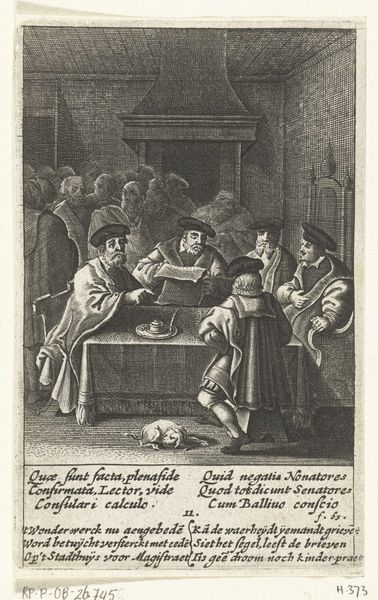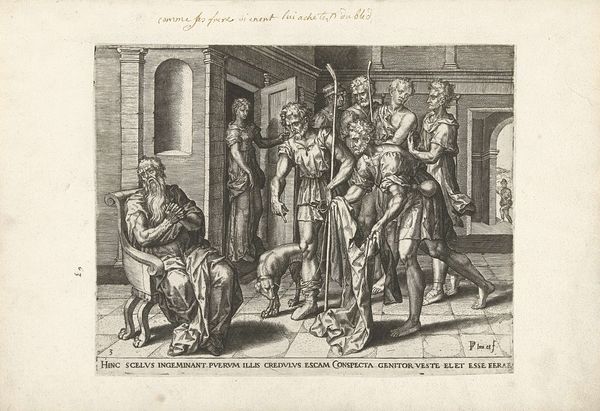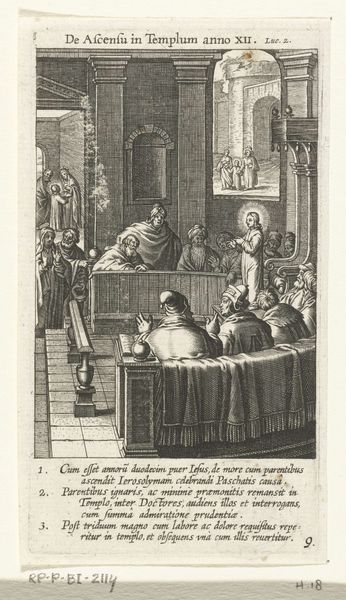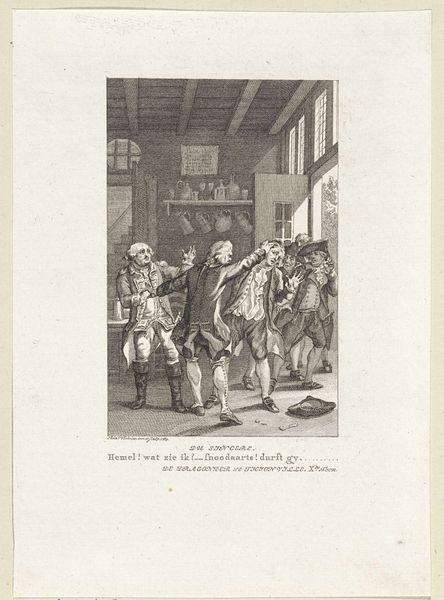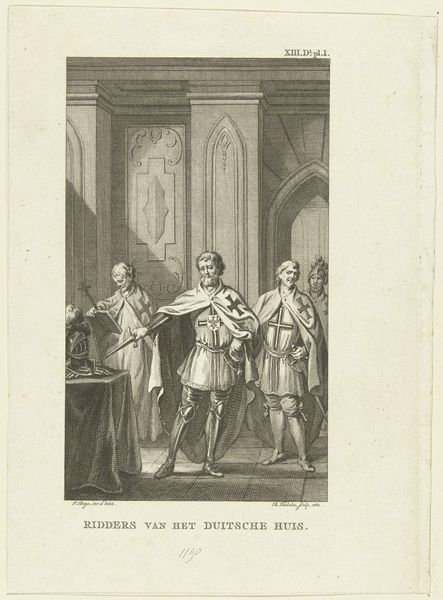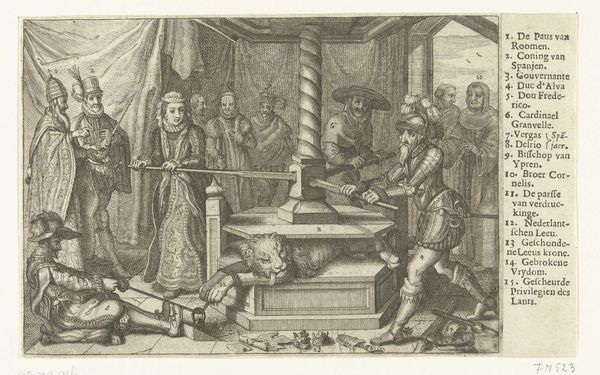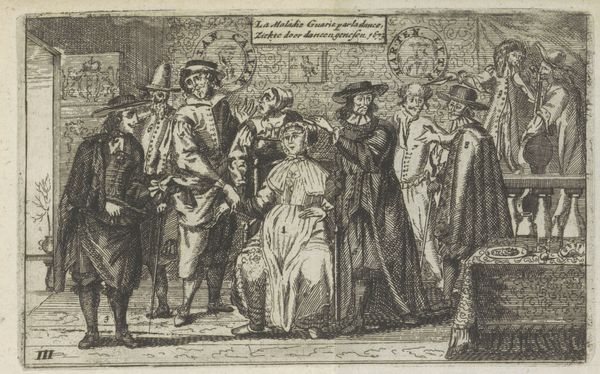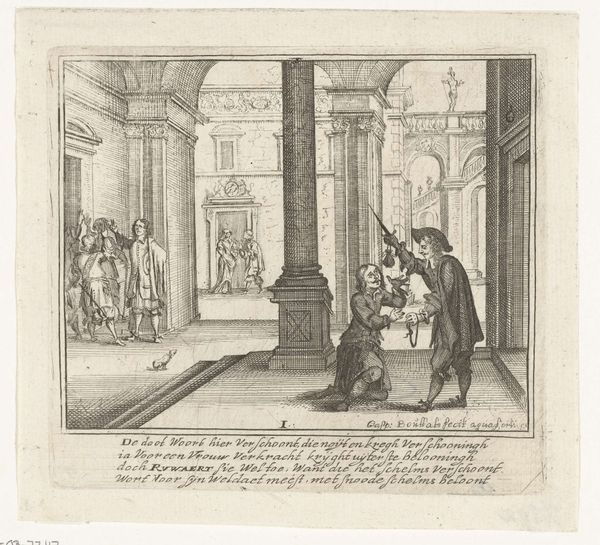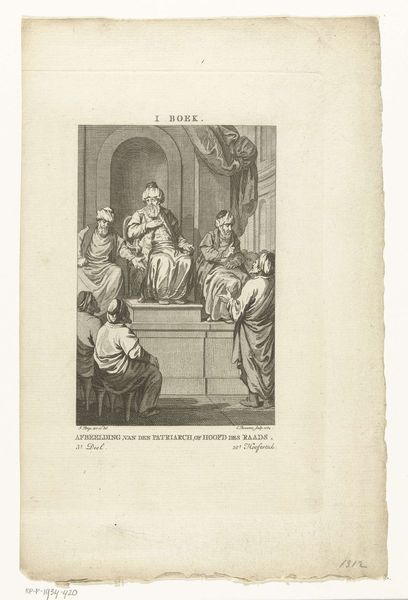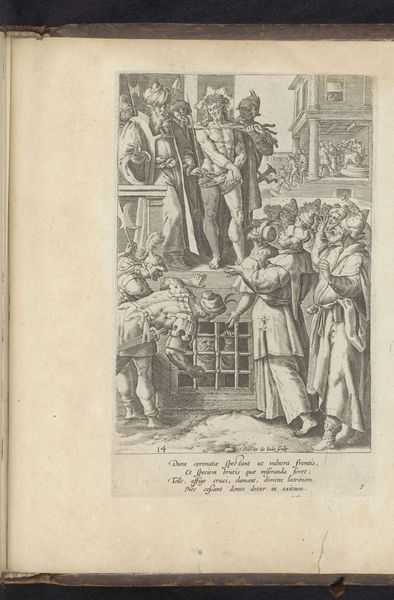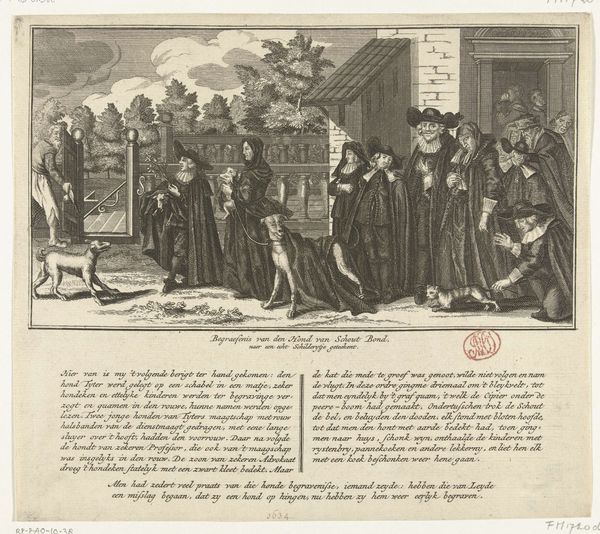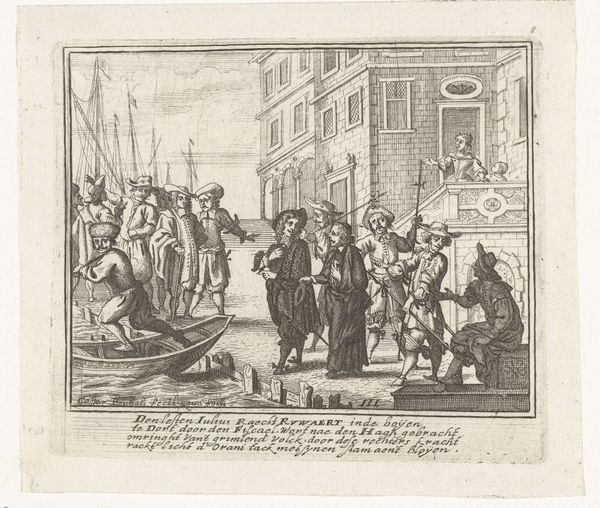
print, engraving
#
dutch-golden-age
# print
#
old engraving style
#
figuration
#
line
#
genre-painting
#
history-painting
#
engraving
Dimensions: height 115 mm, width 80 mm
Copyright: Rijks Museum: Open Domain
Curator: This engraving, titled "Raadsvergadering waarin het wonder bezegeld wordt, 11," was created sometime between 1639 and 1699. It can currently be found here in the Rijksmuseum. Editor: Immediately, the somber lighting and density of figures give me the sense of hushed, important deliberation. There’s a tension evident even in the tiny lines of this engraving! Curator: It captures a moment of significant political theater, quite literally, in the council chamber. Genre scenes like this allowed ordinary citizens glimpses into the world of governance. Note how the print emphasizes a civic process playing out under legal frameworks; you see them handling what appears to be official documents. Editor: Structurally, the positioning of the table, laden with documents and objects I can’t quite make out, draws the eye right to the center. The receding perspective compresses all those figures, emphasizing the collective nature of the scene but making them individually indistinct. I am curious about the presence of what seems to be a dog asleep at the foot of the table. Curator: That’s quite perceptive of you. This genre scene emphasizes a certain level of domesticity within the sphere of civic duty. Dogs often feature in Dutch Golden Age art to represent fidelity and trust. In this context, its inclusion likely reinforces themes of accountability, and transparency, core values within civic participation. Editor: That's interesting to consider how symbols contribute meaning in visual artwork. Does this perspective affect the accessibility or elitism implied within governmental depiction? Curator: Absolutely, the decision to depict such processes for broader public viewership played into a narrative of inclusion during that period, strengthening social identities and validating institutional ideologies. The print, readily distributable, shaped public opinion around legal authority and institutional operations. Editor: The contrasts and careful lining here serve more than just creating a scene, it serves as an endorsement of moral and civic duties to contemporary audiences! Curator: Indeed. In its time, the image would prompt viewers to ponder ethical and public roles inherent within civic structures, offering historical depth into the construction of societal principles. Editor: Well, on closer inspection, it appears that what felt at first to be simple illustration contains great visual storytelling on social structure through spatial construction, lighting choices and even its symbolic figures! Curator: It's a potent reminder that images carry societal expectations and can shape norms within political landscapes.
Comments
No comments
Be the first to comment and join the conversation on the ultimate creative platform.
